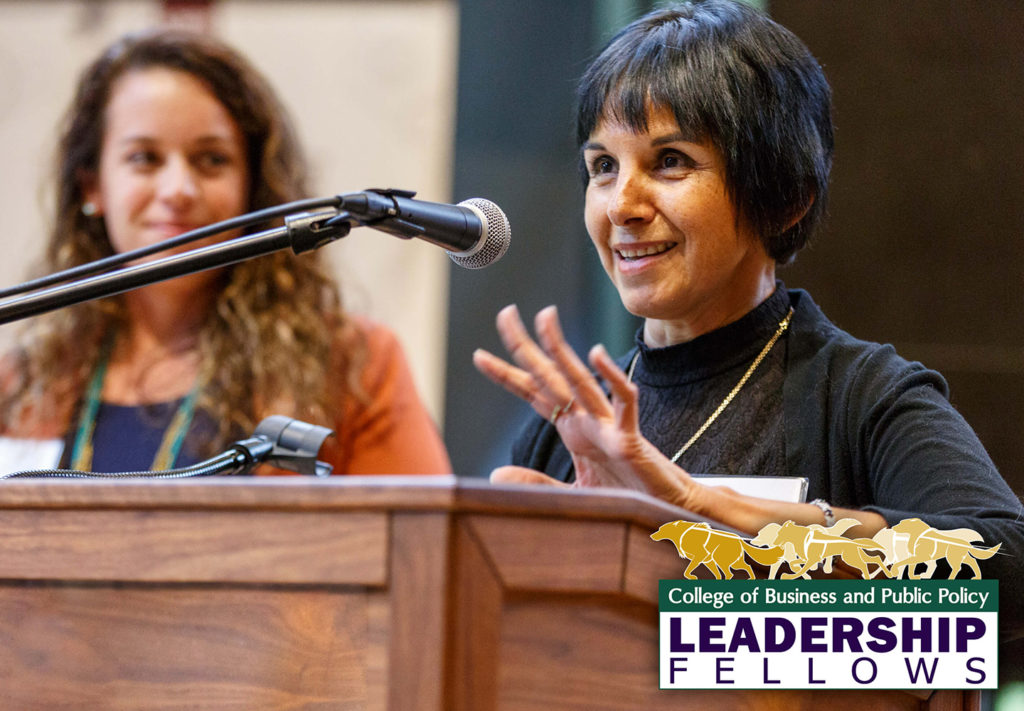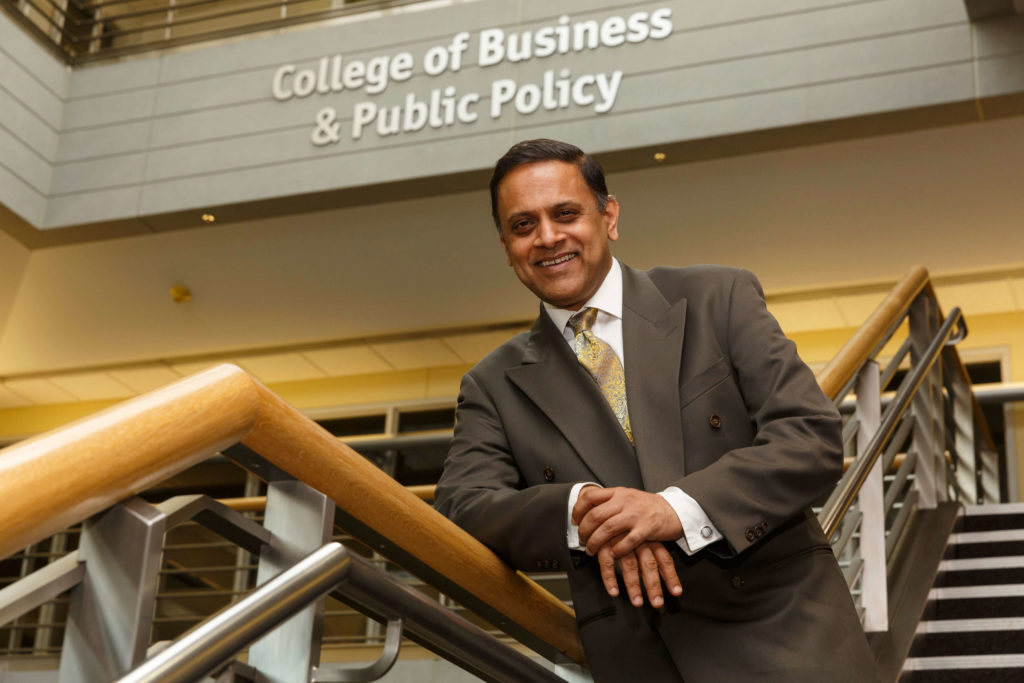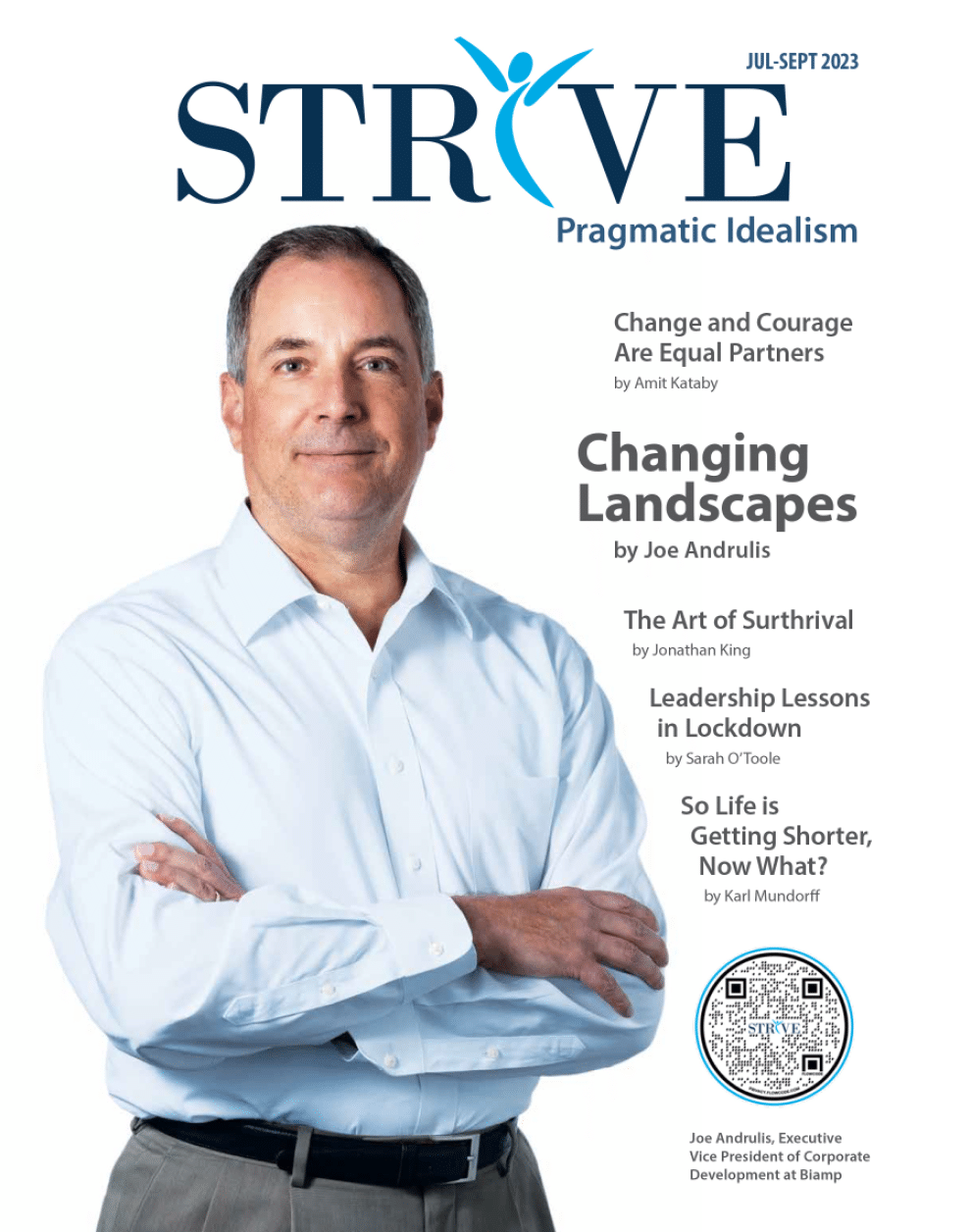Conscious Capitalism is a business framework and movement that is picking up steam outside and around the world. Chapters of business people promoting this idea are now alive and well in 18 U.S. cities and 8 more abroad. A magazine called Conscious Company is now on shelves in 49 of the 50 states (including AK). There are Conscious Capitalism chapters in bastions of liberalism such as the San Francisco Bay Area, but the movement has also been embraced by six Chambers of Commerce in Michigan, some of them in beet red parts of the state.
So what is Conscious Capitalism and why should Alaskan businesses care as they cope with an increasingly challenging environment? Conscious Capitalism starts with the belief that business is the most powerful organized force for human benefit in the world. It identifies the purpose that capitalism serves in society as the advancement of human thriving. Business is the single greatest organizer of human effort on the planet – by far. For business to promote human thriving, it must be built on the most positive and idealistic factors motivating human beings: the need for purpose and meaning, the capacity for cooperation, concern for others and the drive for personal growth.
According to Conscious Capitalism businesses perform best when they focus on four mutually reinforcing disciplines:
- Higher Purpose –”What are the two most important days of your life?” This is a question for reflection presented by Whole Foods founder John Mackey and Raj Sisodia in their book on Conscious Capitalism. “The day I was born” is a universal answer for one of the two days. Responses vary for the second important day, but for Mackey and Sisodia it is the day you discover your higher purpose. This is the answer to the “why?” question that many of us manage to evade for long periods of our life.What does an organization driven by higher purpose look like? It could look like Apple Corporation, driven to enhance the capabilities of intelligent people with intelligent tools. It could look like Whole Foods, who describe themselves as not having a retail mission, but as “missionaries who retail”.
Gallup surveys report that about one-third of employees feel “engaged” in their work. Focusing on and demonstrating a profound commitment to a specific purpose beyond profit is a powerful way to recruit, retain and engage employees, customers, and other stakeholders critical to the success of the company.
Alaska has also given birth to purpose-driven organizations such as the Alaska Housing Finance Corporation, whose mission is no less than “safe, affordable housing for all Alaskans.” Alaska’s more challenging conditions encourage the assumption of greater responsibility and, perhaps, the pursuit of higher purpose. Difficult times also force us to focus on the “why?” question that we may be able to evade at other times. The University of Alaska Anchorage is in the midst of focusing its purposes. Over 1500 staff, students and faculty at UAA recently responded to a Core Values survey by indicating a strong preference for a focus on “student success” and “open access” to higher education.

- Stakeholder Integration – In the film, “It’s a Wonderful Life” the character Clarence reflects to George Bailey: “Strange, isn’t it? Each man’s life touches so many other lives. When he isn’t around he leaves an awful hole, doesn’t he?” For John Mackey, a moment of “awakening” about the meaning and value of stakeholders came early in the history of Whole Foods, when the small and thriving company was nearly bankrupted by the consequences of a flood. Only the commitment of employees (working temporarily without wages) and business partners (deferring payments for deliveries) enabled the business to survive. For Mackey, this was no less than a demonstration of the “power of love”: the love of employees and business partners for the values and purpose of a business they felt committed to, and did not want to see perish.
The Conscious Capitalism approach goes far beyond lip-service to the importance of the customer, with leaders taking every opportunity to teach employees concretely to realize that without the customer, the organization cannot exist.
This pillar of Conscious Capitalism rests on a simple question: are there more “win-win” or “win-lose” relationships in our business lives? If most of your business relationships are zero-sum, integration of stakeholders can’t be a sound practice. Research on negotiation, however, indicates that positive-sum “games” far outnumber zero-sum ones, and that some negotiators persist with a “win-lose” approach regardless of the situation due to “fixed-pie” beliefs.
A significantly large number of firms practicing stakeholder integration raises the overall level of social capital in a community, expanding opportunity structures for new ventures. A key question for Alaska is, how richly connected to each other are businesses in our community and to key public institutions such as the University of Alaska? Is our level of social capital sufficiently high to support a culture of new venture formation?
- Conscious Culture and Management – This goes way beyond adding a Ping-Pong table in the break room. Mackey and Sisodia ask, “is it possible to build a business on love and trust instead of fear and stress?” Logically, a company impelled by a higher purpose should hire for cultural fit and rely less on extrinsic motivators such as pay to get high performance. At Whole Foods, the employees are the gatekeepers; new hires must endure a probationary period and are retained only through a two-thirds vote of members of their team. The credo is one of hiring selectively and training extensively, which is afforded by low turnover. The core organizational structure of Conscious firms is the team. Managers recognize the profound duty to care for their employees like family, to send people home at the end of the day happy and fulfilled, to earn the discretionary effort of their people and, subsequently, to multiply the capacity of their teams.
In the area of culture and management, the Conscious Capitalism framework reiterates the normative thinking that has periodically ebbed and flowed for over a century in the United States. A few years ago, the Economist magazine published an article entitled “When to Terrorize the Talent.” The article summarized research indicating that normative (or employee-centric) and instrumental (or productivity-centric, where employees are a means to an end) practices in management tend to correlate with the business cycle. When employees are scarce and harder to get, they are treated differently. While this cyclical behavior does not bear logical scrutiny, it is especially out of place in Alaska, which has always been a sparsely populated place, regardless of the business cycle.

- Conscious Leadership –The Conscious Capitalism framework provides no single template for effective leadership, but does lay great store by a leaders’ personal development which sets a cap for an organization. Unless leaders proactively seek out opportunities to grow personally, and continually raise that cap, their best people will also fail to grow and either exit, or worse, settle and stay. Either way, the organization will stagnate or in some cases, suffer serious ethical breaches.
The Conscious Capitalist framework is explicitly critical of the shareholder-centric leadership and management that has prevailed in the long period from the 1980s until the present, regarding it as inherently flawed due to a short-term focus and for placing profit before purpose.
The Conscious Capitalist framework must answer for the question of performance. Is it merely another normative approach waiting to be displaced by the remorseless, instrumental logic of market capitalism? Empirical research on “conscious companies” indicates superior financial performance (www.firmsofendearment.com). However, in order for business to reach its full potential as a force supporting human thriving, the measures of performance must be reconsidered with less tyranny of short-term performance.
Of what value is the Conscious Capitalism framework for Alaskans during this critical transition period following the decline of the oil-economy? While we encourage readers to consider this question for themselves, we humbly offer the following observations:
- Purpose driven organizations attract, develop and retain talent. As the Alaska economy experiences a down period, engaging and retaining capable people is an imperative.
- Alaska Native corporations are constantly confronted with the “why?” question, and may benefit from the Conscious Capitalism framework as they evolve and become a driving force of the Alaska economy.
- Alaska must assess and build its stock of social capital. The old truism that Alaska’s enormous geography contains a small and highly-networked business community must be challenged. Public institutions such as the University of Alaska have a considerable role to play in building the state’s stock of social capital.
- Leadership growth and development is critical. Small, remote populations tend to rely on a smaller pool of leaders. With many leaders transitioning to retirement, mentoring of a new generation of leaders is imperative.
We encourage Alaskan leaders to participate in programs such as the College of Business and Public Policy’s Leadership Fellows in order to invest in the future of Alaska.
This article first appeared in the January 2017 issue of STRIVE magazine.
About the Co-Authors
Dr. Rashmi Prasad is Dean of the College of Business and Public Policy at the University of Alaska Anchorage. In leading the largest college of professional studies in the state of Alaska, Dr. Prasad has helped to build a dynamic group of faculty and staff to deliver the highest quality teaching, research and service to further the well-being and prosperity of Alaska. Prior to becoming Dean, Dr. Prasad was a faculty member at the University of Alaska Anchorage for eleven years and currently holds the rank of Professor of Business Administration.
Nathan Havey is the Founder and CEO of Thrive Consulting Group. In addition to private consulting, his major project is the Conscious Company Magazine Workshop, where he leads the effort to help company leaders to implement conscious business practices.














































